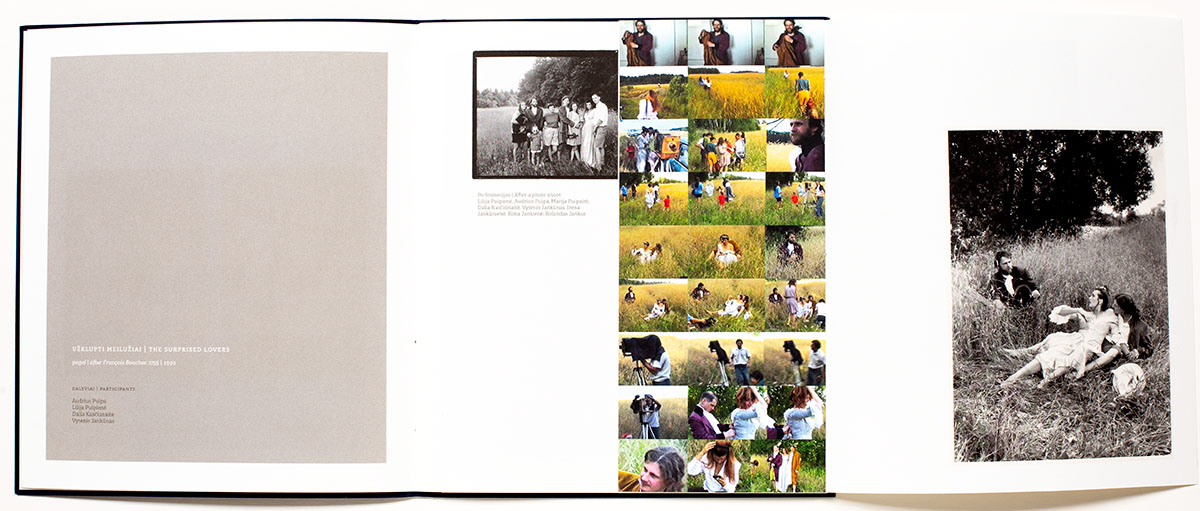
Review by Douglas Stockdale •
It could be argued that every painting has an element of theater as to how the various elements of composition have been carefully chosen to represent something factual or conceptual. Even the most contemporary abstract expressionistic painting has an underlying theatrical process taken into consideration at the time of the interaction between the artist, paint and canvas. Perhaps with the exception of some street photography in which the images are slyly captured and the subject is unwittingly included, photography has elements of that same theatrical quality. Advertising is overtly about staging and theater, perhaps amplified in the brilliant work of Tim Walker.
Staging photographs has a long history dating back to its initial conception by William Henry Fox Talbot, which was summarized in the recent V&A book, Making It Up, Photographic Fictions. The history of contemporary photography includes many versions of photographic theater, including the late Ralph Eugene Meatyard to Duane Michals and the documentary work of Naomi Harris capturing American reenactments throughout Europe, in which everyone is cognizant of being watched.
One such version of photographic staging includes reenactment; to photographically re-envision older artwork and paintings, which encompasses the collective Staged Pictures rendered by the late Audrius Puipa (1960 – 1997), Gintautas Trimakas and their troupe of players in Lithuania. The resulting artist book playfully provides within the gatefolds the backstory to the final artwork, a little wink-wink as to the developing illusion.
The inside gate-folds reveals various versions of the re-enactments as alternative realities. This is both an interesting behind-the-scenes look at the conceptual development as well as expands on the myths of photographic ‘truths’. Is the photograph we gaze at fully revealing of the intended event? What occurred just before that moment and just afterwards? What is occurring off-camera and away from where the camera lens is pointing?
In the essay by Agne Narusyte, Caught in Wonder, or How to Avoid ending up in a painting, she reminds us of the early symbolism that was incorporated in early paintings, that of a visual lexicon that we no longer recognize, as though a lost language. Today, we can pick apart the non-verbal clues and quickly dissect a photograph of a celebrity on the internet, but would we recognize the crossed legs of the prone man to represent potential incest or find a hint of erotica at the inclusion of a bare foot?
The final versions of the reenactment are beautifully rendered in black and white, although the argument could be made that the paintings these are derived from are colorful paintings. There is a conceptual push-pull element to the work that distills the original masterpiece as a graphic version, as if to state ‘what if’ at the time of the original artwork was conceived using an early photographic process what might have occurred? A charming and thought provoking work of art.
Note from Gytis Skudzinskas, the co-publisher; Pictures in the book include captions with two dates – one when the original painting was created and the other when it was staged by Puipa (between 1991 and 1997). Puipa’s role in staging was the main one, as he was choosing which pictures to reimagine, creating scenarios, inviting other artists to play, and deciding on the necessary props. Trimakas was invited by Puipa to photograph because of his ability to manage a large format camera and provided the required equipment. Trimakas is an artist who could compose the pictures independent of Puipa, who was frequently one of the many actors in front of the lens.
____
Staged Pictures, Audrius Puipa & Gintautas Trimakas
Photographers; Audrius Puipa, born 1960 and passing 1997 in Vilnius, Lithuania & Gintautas Trimakas, born and residing in Vilnius, Lithuania.
Publisher: NoRoutine Books, Lithuania (copyright 2018)
Essay: Agne Narusyte
Text: Lithuanian & English
Stiff covers, experimental hand binding, tritone offset printing, printer is Druka
Photobook Designer: Gytis Skudzinskas
_____









Articles & photographs published on PhotoBook Journal may not be reproduced without the permission of the PhotoBook Journal staff and the photographer(s).